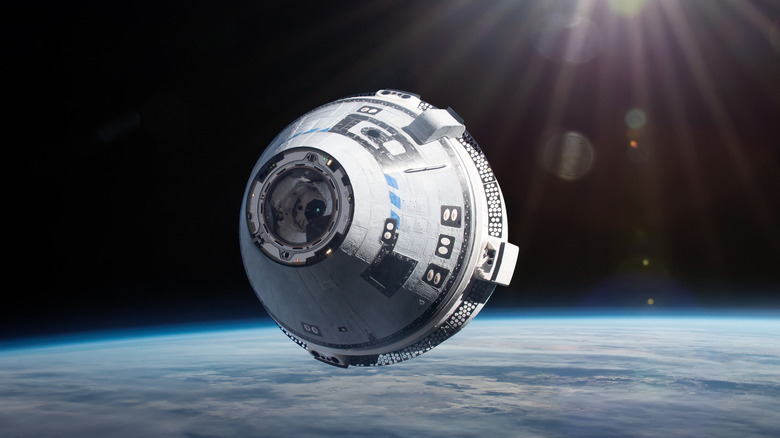
Dima_zel/Getty Images
Boeing is one of the first names that comes to our minds when we think of commercial airplanes, but what many people aren’t aware of is the fact that Boeing is also one of the world’s largest defense and space contractors. All of Boeing’s defense and space activities come under a separate business unit called Boeing Defense, Space & Security (BDS). For context, it is this unit that makes famous military aircraft like the B-52 Bomber, the C-17 Globemaster III, and the F/A-18 Super Hornet. The last of which even made it into our list of the most iconic fighter jets ever built.
BDS is also known for the much-talked-about Boeing Starliner spacecraft, which has been in development for several years now. If things go to plan, the Starliner will soon become an important aircraft for several of NASA’s future missions to the International Space Station (ISS) and also the second human-rated orbital transport spacecraft after the SpaceX Crew Dragon. With the U.S. currently possessing just a single homegrown spacecraft for its manned missions to the ISS, the success of the Starliner project is crucial.
But what exactly is the Boeing Starliner? What is its importance, and how soon will we see this spacecraft participate in important space missions? Let’s find out.
What is the Boeing Starliner?
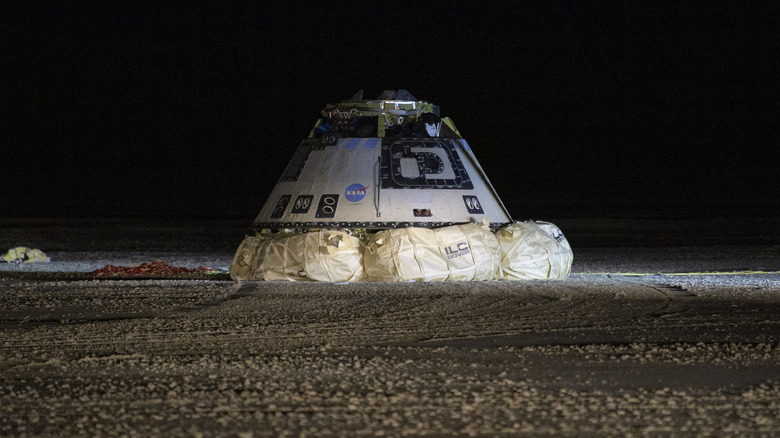
Bill Ingalls/Getty Images
For those seeking a quick answer, the Boeing Starliner is a partially reusable spacecraft that can transport astronauts. It is primarily designed for missions to the ISS, unlike the Orion Spacecraft, which is set to travel to the moon.
As of writing this article, the Boeing Starliner still needs to be certified for human flight. That is set to change soon, on May 6, 2024, once it completes its first crew certification flight. Once this stage is passed, the Starliner will give NASA an additional option to send astronauts to space. Currently, the only other U.S. spacecraft capable of manned missions is the SpaceX Crew Dragon.
The Starliner is a medium-sized conical capsule with a diameter of around 15 feet — making it only slightly bigger than the Apollo command module from the ’60s. It can hold up to seven astronauts and is designed to stay in orbit for several months. While Boeing judiciously uses the term «reusable» when referring to the Starliner, each capsule can operate for up to 10 missions. The Boeing Starliner was designed to work with several different rockets and features an expendable service module that attaches to the bottom.
How important is the Boeing Starliner?
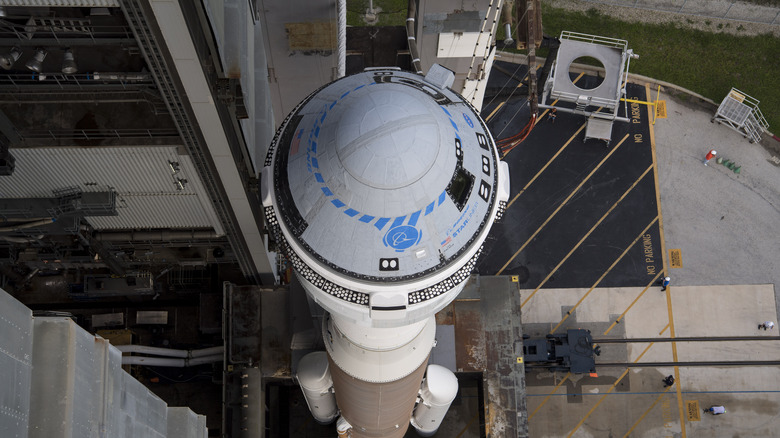
Nasa/Getty Images
As of 2024, only three countries on Earth — China, Russia, and the U.S. — have the technology and know-how to send humans to space. China was the last country to make it to this exclusive club, with its manned missions limited to its own space station. Russia and the United States, on the other hand, have more extensive experience. In fact, the two countries have been strange space bedfellows for a while now, thanks to their deep collaboration in connection with the ISS.
Since the retirement of the Space Shuttle Program in 2011, the U.S. has found itself in a rather odd situation. NASA became dependent on the Russian Soyuz spacecraft to send American astronauts to the ISS. While NASA originally envisioned a reasonable four-year gap between the retirement of the space shuttle and the arrival of a viable U.S.-based replacement, we now know that things didn’t quite go as planned. NASA remained dependent on Russia for missions to the ISS for almost a decade, a drought that ended with the first crewed launch of Space X’s Crew Dragon to the ISS, launched on May 30, 2020.
Once the Boeing Starliner joins the list of human-rated spacecraft capable of going to the ISS, NASA will have an additional option for manned trips to the space station, enabling it further to distance itself from dependence on Russia for space travel to the ISS.
Why was the Boeing Starliner project delayed?
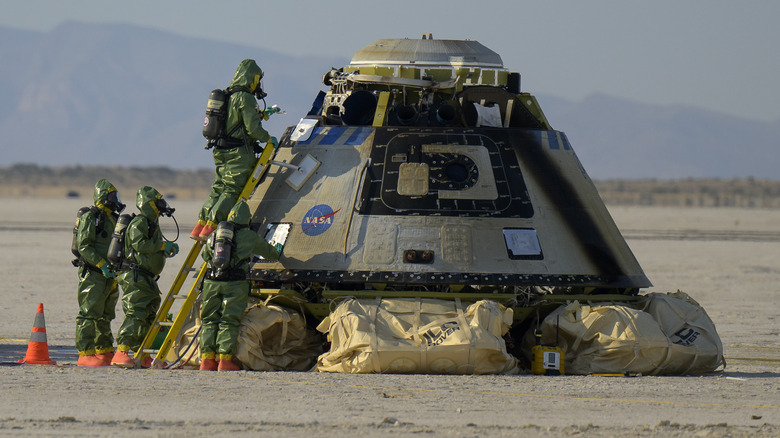
Bill Ingalls/nasa/Getty Images
The Boeing Starliner Project is part of a NASA scheme called the Commercial Crew Program (CCP). Introduced in 2014, the goal of the CCP was to collaborate with private companies in America to develop safe, cost-effective transportation solutions to and from the ISS. Boeing and SpaceX were among the companies awarded the contract for this project, with both companies given a target to develop and certify the crewed spacecraft by 2017.
However, from the start, the Starliner Project encountered several delays. In August 2018, NASA announced the crew assignments for the Boeing Starliner’s first crewed flight test. Following this, the first crewed launch was postponed to 2019 due to several development and testing issues. The project encountered delays in 2019 when a software issue prevented it from reaching the ISS during an unmanned test flight. This led to NASA pushing back the crewed flight test by several months.
By 2021, the Starliner Project was still awaiting crewed test certification after already being delayed by four years. However, a series of technical problems would cause it to wait even further. The program encountered more delays in 2023 as well, following which Boeing and NASA pushed the crewed certification flight back to May 2024.
If everything goes according to plan, the Boeing Starliner will finally receive certification for crewed space flight within the next few weeks.
What’s the future for the Boeing Starliner?
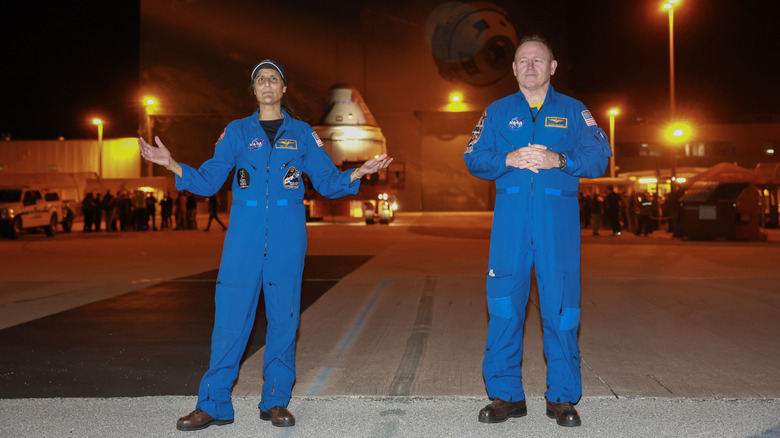
Joe Raedle/Getty Images
Once the Boeing Starliner completes its first crewed certification flight, the spacecraft will finally be certified for several planned missions to the ISS. According to current plans, the certification flight – scheduled for May 6, 2024 — will take off from the Space Launch Complex-41 at Cape Canaveral Space Force Station in Florida. The spacecraft will be attached to the United Launch Alliance (ULA) Atlas V rocket. Once reaching orbit, the Starliner will dock with the ISS. The crew members of the first test flight include NASA Astronauts Butch Wilmore and Suni Williams.
The crew members will monitor the spacecraft’s performance throughout the trip. Once docked to the space station, the duo will spend almost a week there before safely landing back on Earth. Unlike the space missions that returned to Earth by landing like airplanes on the runway, the Starliner will perform an airbag-assisted parachute landing somewhere in the southwestern United States, following which a NASA team will safely recover both crew members.
Once certified, NASA intends to use the Starliner for several trips to the ISS. The first flight is expected in 2025, when a group of U.S. astronauts will head to the ISS and spend six months there. In the future, NASA plans to conduct several more flights alternating between the Boeing Starliner and SpaceX. These spacecraft are expected to make regular trips to the ISS before it’s decommissioned after 2030.